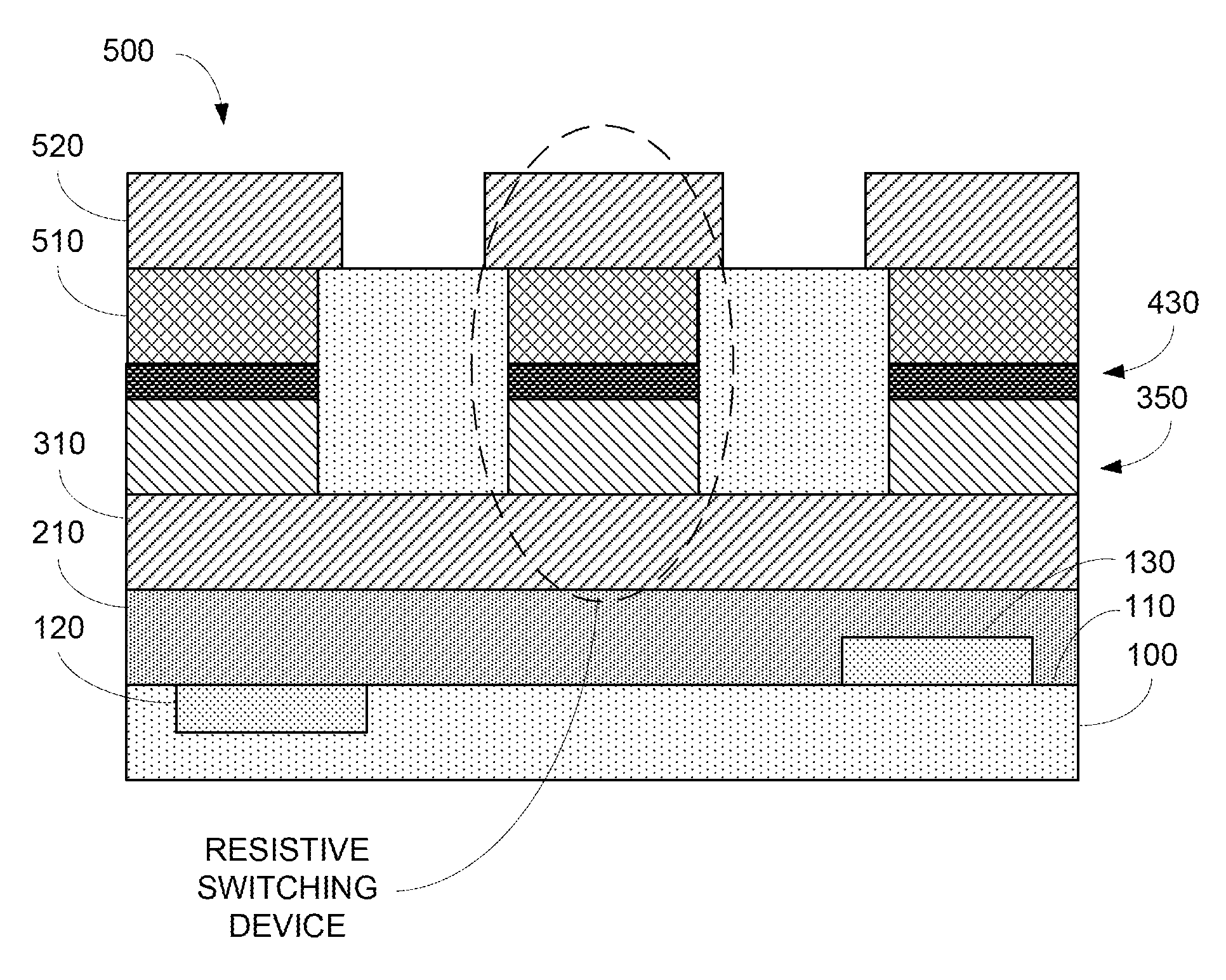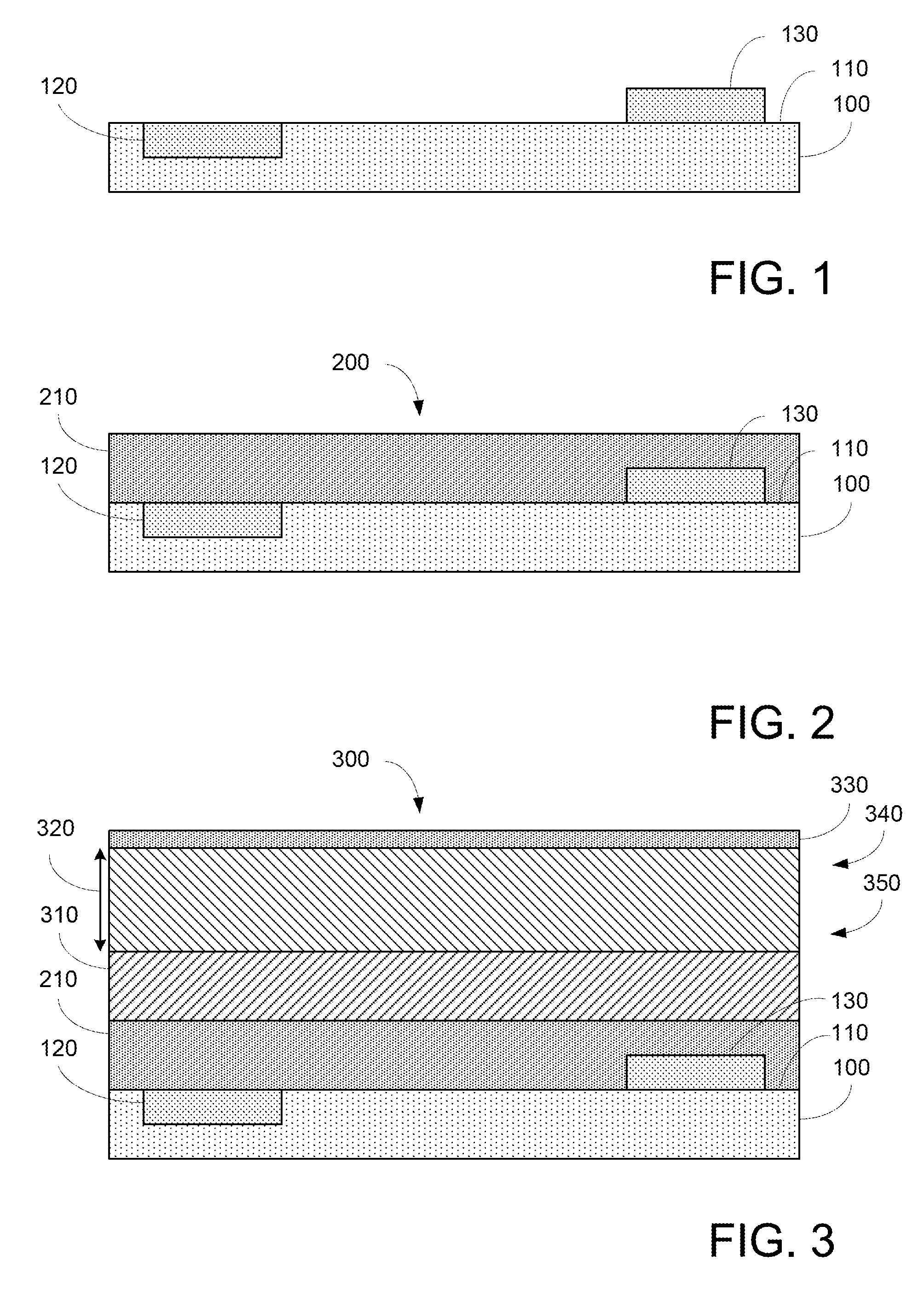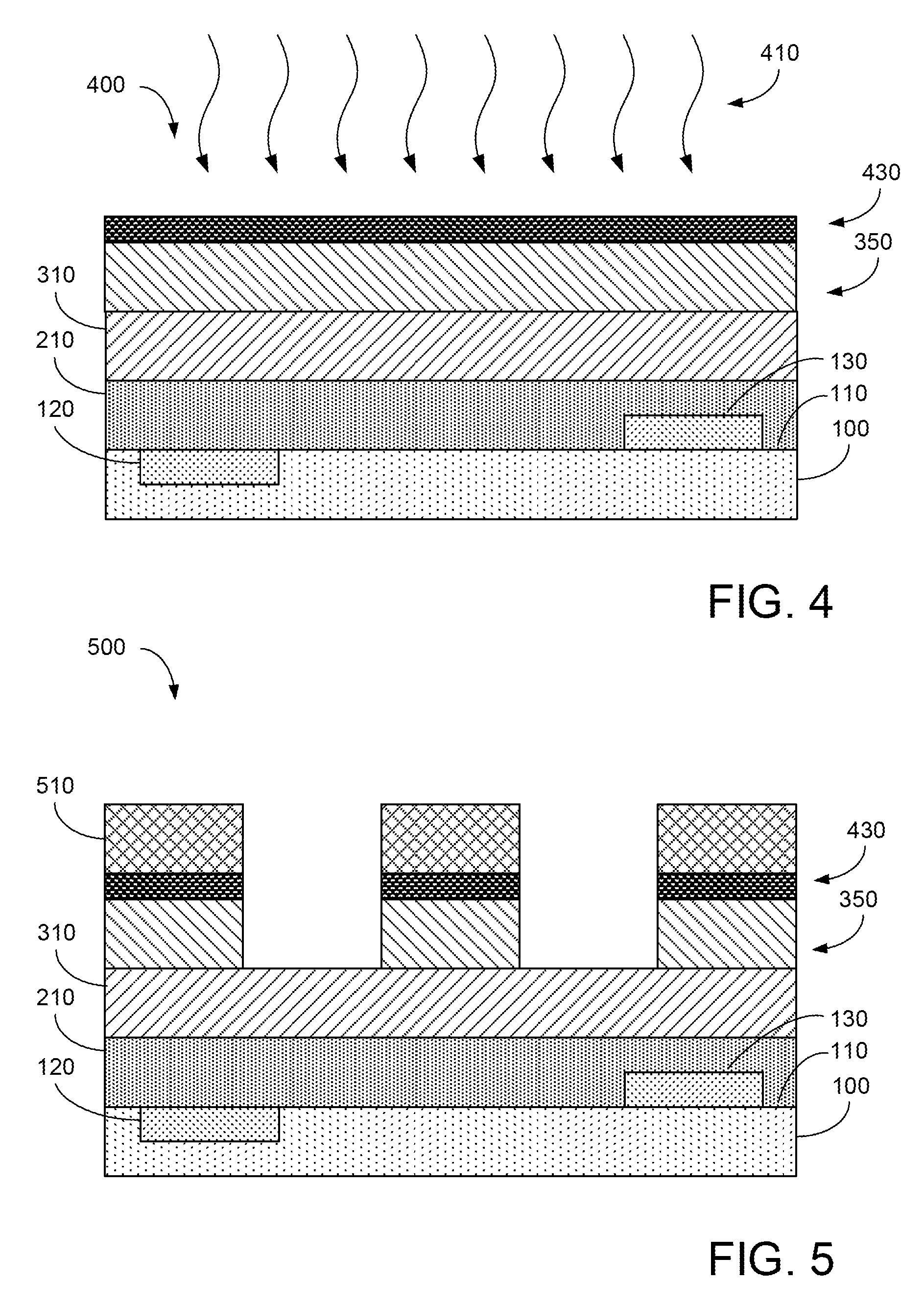Resistive memory device and fabrication methods
- Summary
- Abstract
- Description
- Claims
- Application Information
AI Technical Summary
Benefits of technology
Problems solved by technology
Method used
Image
Examples
Embodiment Construction
[0023]The present invention is generally related to a memory (switching) device and an apparatus including a memory device. More particularly, embodiments of the present invention provide structures and a methods for forming one or more resistive switching / memory devices each having improved memory retention characteristics. The embodiments described herein are described with respect to fabrication of high density non-volatile memory devices. However, one of ordinary skill in the art will recognize that these devices may be applied to a broad range of applications, such as processing devices, computing devices, or the like.
[0024]FIG. 1 illustrates a substrate 100 having a surface region 110. In various embodiments, the substrate 100 can be a semiconductor substrate, such as: a single crystal silicon wafer, a silicon germanium wafer, a silicon-on-insulator substrate, commonly known as SOI, and the like.
[0025]Depending on the specific embodiment, the processes described herein are bac...
PUM
 Login to View More
Login to View More Abstract
Description
Claims
Application Information
 Login to View More
Login to View More - R&D
- Intellectual Property
- Life Sciences
- Materials
- Tech Scout
- Unparalleled Data Quality
- Higher Quality Content
- 60% Fewer Hallucinations
Browse by: Latest US Patents, China's latest patents, Technical Efficacy Thesaurus, Application Domain, Technology Topic, Popular Technical Reports.
© 2025 PatSnap. All rights reserved.Legal|Privacy policy|Modern Slavery Act Transparency Statement|Sitemap|About US| Contact US: help@patsnap.com



